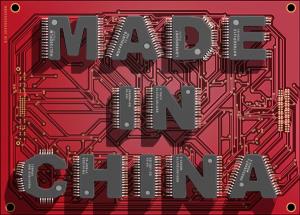China target is 70%

An analysis result showed that it would be difficult to’roll semiconductors’ that China aimed at.
Market research firm IC Insights announced on the 8th that the Chinese semiconductor self-sufficiency rate is expected to be 19.4% in 2025. It is far below China’s 2025 semiconductor self-sufficiency target of 70%. Last year, the self-sufficiency rate was 15.9%. In the global semiconductor market ($143.4 billion, about 157 trillion won), the number of semiconductors produced by China was $22.7 billion (about 24.900 trillion won). Even this, the sales of Chinese companies were only 8.3 billion dollars (about 10 trillion won). The rest is sales from overseas companies, such as TSMC, SK Hynix, Samsung Electronics, Intel, and UMC, which have opened semiconductor wafer factories in China. Of the $8.3 billion in sales of Chinese companies, it was found that IDM accounted for $2.3 billion and foundries such as SMIC accounted for $6 billion.
IC Insights analyzed, “Even if the sales of semiconductors in China increase significantly, there is a high possibility that semiconductor production by local companies will still occupy only about 10% of the global market in 2025.”
China announced the industrial plan of’Made in China 2025′ at the 2015 National People’s Congress. It was declared that it would do a’semiconductor roll’ by synthesizing these series of plans. It was to secure the core design technology and manufacture the chip itself. The target for semiconductor self-sufficiency, which depends on imports, is also set at 40% in 2020 and 70% in 2025. In order to achieve the goal, it invested in semiconductor companies such as Huawei, ZTE, Tsinghua Uni, and SMIC. It also revealed that it will invest 1 trillion yuan (about 170 trillion won) over 10 years. Although it was unsuccessful, it also actively pursued mergers with overseas semiconductor companies.
But U.S. sanctions have caught up. Last year, the United States tightened sanctions on Chinese semiconductor companies. In May of last year, when a foreign company exports products using US technology and parts to Huawei, it was approved by the US Department of Commerce. In December, the Chinese foundry SMIC was blacklisted.
Industry sources predict that Chinese semiconductor production technology will not be able to keep up with leading companies due to US sanctions. In the case of foundries, TSMC and Samsung Electronics, which are the No. 1 and 2nd in the industry, can produce chips with a microprocess of 10 nanometers or less, but SMIC in China can only do 14 nano processes. For processes below 10 nanometers, EUV equipment from ASML, a Dutch company, is required, and US approval is required to introduce this equipment.
An industry insider said, “It is expected that it will be difficult to develop semiconductors in China.”
Copyright © The Elec, the electronic component specialty media Unauthorized reproduction and redistribution are prohibited.
